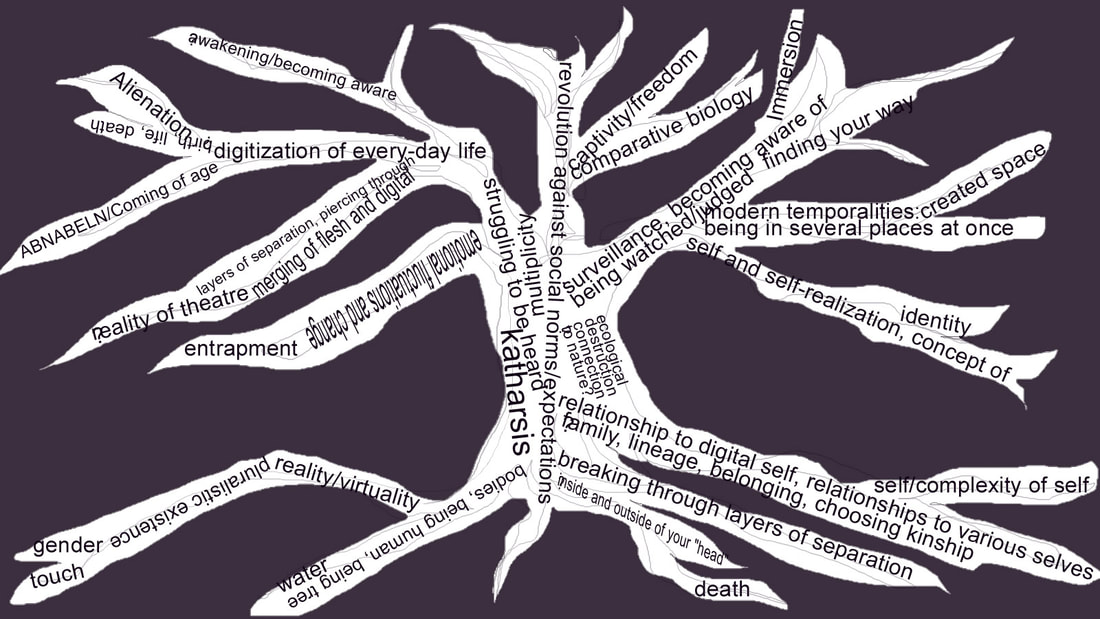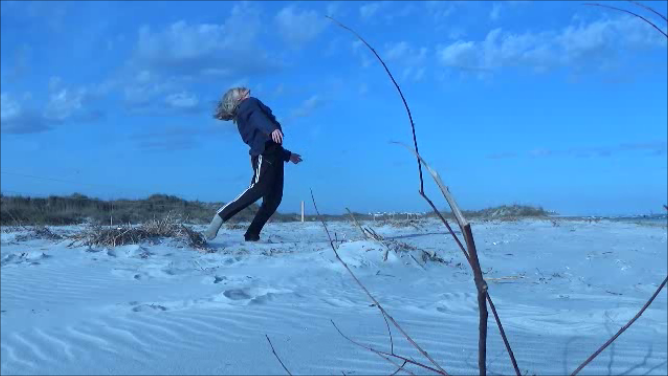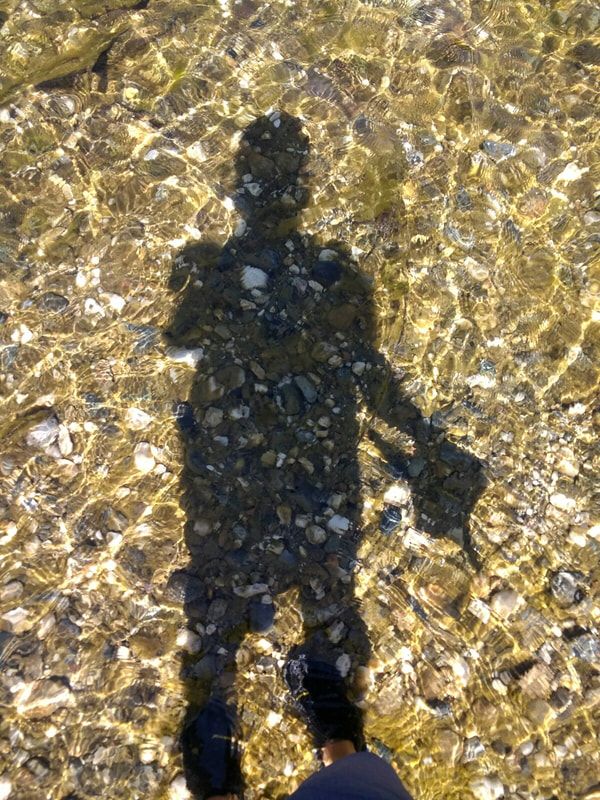Just don't have the time to keep this blog as regular as I would like.... in the midst of writing a PhD......
|
Thoughts on a performance of 'Estados de Vulnerabilidad' at UC Davis, CA, USA
'States of Vulnerability' January 18th, 2018 7pm Arena Theatre, UC Davis 'Estados de Vulnerabilidad' was a performance created by Victor Viviesca, Professor of Universidad Nacional de Colombia, in collaboration with Research-Creation Group Pensar Sonido Universidad Nacional de Colombia and Teatro Vreve. The piece was live performed by Victor Viviescas (main actor), Javier Giraldo (Light performance) and Federico Viviescas (sound performance). Description – The Scene When entering the space, Victor Viviescas was already on stage, sound was playing. The audience flows into a blackbox space that is reduced in size by a black curtain that transforms the space into a square, which, by division of audience and performance space creates a playing field for Victor that is a rectangle, wider than deep, about 50' x 30'. The scenery suggests a landscape, everything is arranged in parallel lines to one another: three rows of audience seating run parallel to the downstage edge, conjuring imagery of a street, or a landing strip. The audience's feet are only 12 inches away from the first set element: a chain of light-bulbs, like those used at yard parties. After about 20' a second row of lights, also laying on the floor, stretches across the entire space. Upstage of those are two long sheets of construction paper, the ends turned up and the half full rolls standing on edge upstage right, next to two or three rolls of black Marley flooring, also standing on edge. Next to them are several plant containers with shrubs and grasses. Upstage center on the paper, downstage of the black curtain and upstage of the upper row of lights are two approximately 1sft rocks, next to that two metal buckets. Upstage left are a pink towel, a blanket, a water bottle, and other items we can not see at the moment that will be revealed later (makeup and gauze for wrapping his head). The downstage floor is black. Two lights are positioned on boxes to shine across the middle section of the space at about chest height. Description – The Action The main action area is the downstage playing field. As we enter, the actor is within this space. He is dressed in white underwear type pants and shirt, a white jacket, under a dark leather jacket, under a brown or green felt coat. He wears big boots. Two buckets are in his space, one filled with dark potting soil, the other with a light gravel or salt-like material. He takes handfuls of either and spreads it throughout the space, dividing the space into smaller sections, dark and earthy on one side, light and dry on the other. Reflection Although the creators of this piece said that there is no one meaning that they intend to get across, I attached a number of narratives to the actions I witnessed. It is nearly impossible not to assign meaning and connect supposedly random events with one another. Mostly I saw a human's, or to be more precise, a man's relationship with materials, earth, water, light, glass; and with us, the audience; immediate accomplices and witnesses to his unfolding. He begins heavily clad in boots, pants and thick felt coat. Over time, he sheds layers, individual items of clothing get meticulously placed within the space, and rearranged numerous times. He begins with spreading earth and rock, crushing the rock with his boots. He covers his head four times, twice with one of the buckets, once with a blanket and once with gauze that he wraps around his head. Upon the blanket and the gauze he paints crude eyebrows, eyes, cheeks and a mouth with makeup, by scooping the paste out of a small makeup container and smearing it onto he general areas of the eyes and mouth. He seems to be searching for these parts of his body; blinded. Alone. He crushes a light-bulb and later, although barefoot at that time, has no regard for the danger or the likely sensation of shards in his feet. But his encounter with sharpness and injury does not make me feel offended. I simply witness. Trust. The Nature of Things He disguises himself; and reveals himself. He vocalizes, perhaps speaks simple words. His voice and all sounds from the stage become echoed at one point, evoking a valley surrounded by mountains. Suggesting cause and effect. He disappears behind the black curtain to drag a dead Christmas tree (I suppose he found it on the streets of Davis and recruited it to become an actor in his play) to the downstage area. He interacts with the uncooperative tree as if he is trying to get it to sprout roots and hold itself up again. It keeps falling over. He begins to shake the tree, the branches; he extends his efforts from the center out; he shakes all the props the clothes he has shed, the socks. Nothing continues to move on its own everything simply absorbs and embodies the passively inflicted movement. Limp. Vulnerability Gradually, he becomes more vulnerable, more meticulous, feet bare, underwear, t-shirt, his left hand bleeds from handling the tree and the rocks. He interacts with these things, perhaps in no specific way, perhaps with no specific intention, but he ultimately interacts with them like a human being does. He does what his nature demands of him he do? He animates, changes, moves, destroys, rearranges, yells at, longs over, coordinates, thinks, seeks to form connections, meaning within us. And in the end, he takes the big, long rolls of flooring and covers up the entire, messy, devastated scene. He 'paves' over the tree, the clothes, the rocks, the dirt, the make-up, the plants. Everything disappears underneath an artificial layer of shiny vinyl flooring. I can't help but be moved by the destructive forces of our species, our tendency to change, destroy and exchange natural things with our own inventions, our own materials. We make everything foreign and in the end the space is completely devastated. Mechanics His sense of timing was excellent, repeating actions, envisioning, wanting, and miming actions before doing them, showing intent and execution, desire, the physical and the ethereal, the labor. The cause for it all is unclear, seems utterly arbitrary and simply based in opportunity. Futility Such it is human nature to continue to try something until it works or we have another idea to replace the old one, and to get what we want some other way. Our will always succeeds. We rule. Yet there is nothing left to rule over. Innocent evil He plays with space, with lighting, with audiences. He incorporates and notices everything, each morsel of dust, our gaze, the air behind the curtain. He opens and closes the space, he creates and destroys distance. He segments the space into smaller compartments, little territories, lines to step over, little barriers to build, reconfigure, or destroy and rebuild. He plays with light, shadow and darkness, stepping in between the lit objects and the source, his shadow getting bigger, his shadow darkening the space, darkening our own space, the audiences space, our common space. He connects all elements in the room, makes eye contact with the people repeatedly and distinctly. We get drawn in further and further into detail, closer to the epicenter of his living flesh, only to leave us alone with the devastation of his actions and our complicity. Was he expecting us to act? To prevent, to help? We just sat and let it all happen. Such is our nature, too. Final thoughts In the Q&A, the artists revealed that the concept behind the performance was that everything was random. That there was no planned or definite meaning behind the performed actions. The main performer tells us that the elements used are always the same, but the order of them changes with every performance. I have to admit: I do not understand what they mean. Do the elements used on stage not have any meaning? Or does the arrangement of the different elements on stage, which in themselves have meaning, not combine to a pre-determined narrative? I never could relate to the 'Oh, it means whatever you want it to mean' statement. I know that ultimately I will only be able to view and interpret things through my own subjectivity, but I am interested in the intent of the artist. It's a conversation, no? Between the artist and the audience. Perhaps the artist is not aware of what they are saying. This could be; very valid, a sub-conscious process. Perhaps there is now the need to discuss narrative and story. Does narrative suggest a linearity of events? Does a story or a narrative get created by doing actions in a specific order, or can the same narrative be conveyed out of order? Do elements hold narrative or story? I could follow the fate of the white gravel like material and write it's narrative. Is it possible to not have narrative? Does narrative include logic? The artists here are using elements that remain the same with each performance. They seem to connect logically, meaning, they do not appear to be selected randomly and are quite archetypal: trees, dirt, water, clothing, make-up. I suppose, it could have been that the artists decided to use the first 50 items they encountered upon setting foot on campus. I don't know. I think that the selection of elements is strongly narrational, and interconnected. Either way, I think the message is that we cannot not express, or maybe, to be more precise, that we can not not interpret. Inevitably, meaning is assigned; at least to some of the elements of the performance. Then those elements that have meaning are combined to create a narrative by the audience. A quote from Diana Taylor's book 'The Archive and the Repertoire: performing Cultural identity in the Americas” reads: ”instead of focusing on patterns of cultural expression in terms of texts and narratives, we might think about them as scenarios that do not reduce gestures and embodied practices to narrative description.” This is a different way of looking at the same thing, with different possibilities, and a different level of involvement on the part of the audience, who in the narrative is supposedly an observer, hence 'removed', and in the scenario a 'participant' and a creator of narrative. We always are creators of narrative, except in this approach, the agency of the audience is known and intentionally applied. I would say that the audience needs to know in advance that that is their role to really fully engage in the meaning of the piece; otherwise it will lead to confusion, such as on my part. I am confused about the intent and the meaning of the piece. But not because of the actions on stage, only because of the statement that there was no meaning. So in this experiment on narrative, the artists offered options that could be combined in any random way, but really were about as random as putting a knife, some blood and a dead body into the same room. Surely we are not talking about a fashion show. The actor manipulates, moves, sheds, destroys, bleeds, etc. My opinion is that if the narrative is truly random then the choice of elements needs to be completely random as well, the staging different every night, audiences in different places, maybe even different performers, different sound, etc … otherwise by giving archetypal elements that lend themselves to specific/common interpretation, it just seems like self deception to proclaim that there is no meaning. By the way; I absolutely loved the performance. Please take part in my "Tracing Gesture" project by giving feeback on a series of short films I have uploaded here:
https://www.karolaluettringhaus.com/tracing-gesture.html "Tracing Gesture" investigates meaning and meaning-making. Thanks a lot. Karola. The beauty and the pain of life
Bring tears to my eyes I dissolve in you, world The beauty in the uglyness And the ugly in beauty To help in vein And the vanity of help The awe for your life, your power, your wisdom Your whole body smaller than my fingernail Not afraid of me I listen to the sound of your wings Friedolina forever
|




